Deja Vu – A Plane Spotting Challenge by John Madden
Catch up on the previous reports from this challenge:
Introduction
Trip Report #1
Trip Report #2
Trip Report #3
Trip Report #4
*Trip Report #5
July 2021
Four mammals, a rather large seabird and my first “Hawk”
Madrid Barajas, Cuatro Vientos, Museo del Aire, Getafe
by John Madden

Spotting Trip Report No. 6 by John Madden on his epic aircraft by type spotting Challenge
Until we have wheels up, I will not believe I am going to Madrid!
Since embarking upon this Spotting Challenge, I have been longing for a trip that included flying somewhere with the sole objective of spotting, nothing else, just plain simple Plane Spotting. Those of you who read my last trip report will be quick to remind me that Antigua involved a return flight. I agree, but I was continually reminded by the other 5 people in the group that first and foremost it was a holiday.
In March 2020 I decided that my first spotting trip would be a visit in June to the Museo del Aire in Madrid. As my birthday fell just 2 days before the intended trip, and unlike the rest of the inhabitants of the Madden household, my father actually “gets” my Spotting Challenge and very kindly offered to pay for the flight. The CASA 207 Azor “Hawk”, of which only 22 were manufactured by CASA at neighbouring Getafe, is an aircraft type that had evaded me during the last half century of spotting and was the main lure to the museum.
Boarding an aircraft bound for Madrid during the last 12 months has proved to be a journey in itself. Not only has this spotting trip been kicked down the road many times due to COVID related travel restrictions, it now includes a night stop due to a much-reduced flight schedule. Additionally, the trip includes a whole raft of pre-trip planning that none of us would have imagined just a few years ago;
- a plentiful supply of face masks
- a bottle of hand sanitiser
- a pre-booked Lateral Flow test via Zoom from my hotel (other communications tools available)
- a Spanish sanitary declaration form
- a “Day 2” PCR test arranged after my return from Madrid
- an International Driving licence
- … and not forgetting a COVID-19 Passport!
With all that out of the way and now using a larger ruck sack than originally contemplated, I can start to think about collating my spotting gear and toothbrush. Where is Mrs Potato Head when you need her for that “just in case” item you have forgotten?
My original booking to Madrid included a return flight aboard an Airbus A340-600, an aircraft type that I had long wished to fly on. Sadly, as we all know, this aircraft type was stood down by Iberia last August and has most likely ended any chance of flying on the type. Never mind, every cloud has a silver lining and the return leg still involves an Airbus wide-body, now an A350-900. If this trip to Madrid turns out to be half as rewarding as my last visit in May 2019, then I will be more than pleased!
Why Madrid?
What do I expect to spot in Madrid? Initially I was drawn to the city because of the classic aircraft collection in the Museo del Aire located some 25 miles south west of Barajas Airport. The museum is home to many aviation gems including the Douglas C-54, DHC-6 Caribou, Boeing KC-97, HU16B Grumman Albatross, CASA built JU-52 (CASA 352L) and the CASA 207 Azor “Hawk”. All the aforementioned aircraft types and some additional exhibits are required as part of my Spotting Challenge and will make a healthy dent in the outstanding types not yet spotted.

Routes used on Madrid spotting trip
With a much-reduced flight schedule between London and Madrid now preventing a day trip, I find myself with a night stop and the luxury of a few extra hours on hand. This has provided the opportunity to hire a car and include Getafe and Torrejon airfields to the agenda and hopefully spend a much-anticipated afternoon on the Barajas “Spotting Mound” in pursuit of more modern types. Whilst aircraft movements at both Getafe and Torrejon are limited, the Airbus facility at Getafe should afford several interesting aircraft types including locally produced CN235/239 and A330 MRT aircraft, and perhaps even a visiting Beluga collecting A350 components for shipment to Toulouse?
I would also very much like to spot T22-2, the Presidential Airbus A310-300 of the Spanish Royal Flight based at Torrejon. I have been fortunate enough to spot the Jordanian A310-300 cargo variant at Heathrow during this Challenge, so a passenger configured version would be most welcome. I am also intrigued to find out if any retired Iberia, Plus Ultra or Evelop Airbus A340-600 aircraft adorn the perimeter fences at Barajas Airport. I suspect not, as by now they may have all been flown the nest for parting out and Madrid is no longer the A340 haven it was this time last year?
A quick update on my spotting Challenge before we depart for Madrid:
The combination of a new job and “Lockdown 2” has kept me house bound for much of 2021 and any spotting has largely been conducted from the garden. Notable “new” aircraft types spotted during this period included a United Boeing 767-400, a Delta Airlines Airbus A330-900 and on 24th June, 5A-ONE, the Government of Libya Airbus A340-200. The day started out on a promising note as I had been alerted by a local spotter that not only was the A340-200 expected at Heathrow later in the day, but Brize Norton would be visited by the Antonov Airlines An-225 bringing a number of RAF Pumas back to the UK from overseas deployment.
Unfortunately, work prevented me from taking the 3 to 4 hours needed to pop over to Brize and back that afternoon, so I waited enthusiastically for Antonov to pass over Ascot on the final few miles of it’s journey from Kabul via Karachi. Once again due to cloud cover, I failed to spot the Antonov and she departed that evening to Kiev tracking north of London. Missing the Antonov for a second time hurt, so I made sure that I would be away from the “home office” at 5pm sharp and thankfully caught 5A-ONE parked on the VIP ramp in full view from the southern perimeter road. I had begun to believe that this particular member of the A340 family would prove too difficult to spot in the UK so the newly returned to service aircraft was a welcome visitor. I have said this before, I will catch you Mryia even if I have to travel to Kiev! Now that’s an idea?
LHR to Madrid:
A quick peep at Flighradar24 before I departed for the airport revealed that my ride to Madrid this morning would be aboard British Airways A320ceo G-TTOB. Twenty minutes after leaving home I am parked up in the Purple Parking facility close to 27R and hastily retrieve my ruck sack from the boot of the car to catch the transfer bus to T5. Waiting in the open for the transfer bus there is no mistaking this is Heathrow; I do love the smell of Kerosene in the morning. The airborne cocktail was soon topped up from an inbound British Airways 777 from Singapore, and with a quarter full transfer bus, we sped off to T5 following 27R westward but alas nothing followed the 777 before we disembark at the terminal.
It is just over two years since I last flew from T5 and that was with my wife aboard a Vueling Airbus A320 to A Coruna. I need to clarify the earlier candid reference to a very rewarding previous visit to Madrid in 2019, and what is the connection to A Coruna located 350 miles to the north of the Spanish capital? As with all Champions League finals that involve a British football club, flights to the host city are extortionate. To exacerbate the situation, the 2019 Champions League final held in Madrid involved two British clubs! A Coruna turned out to be the most practical and cost-effective direct alternative to Madrid so we made a long weekend of the affair and whilst being a bit of a trek, thoroughly enjoyed our round trip through the mountains and plains of northern Spain. Time to board today’s flight.
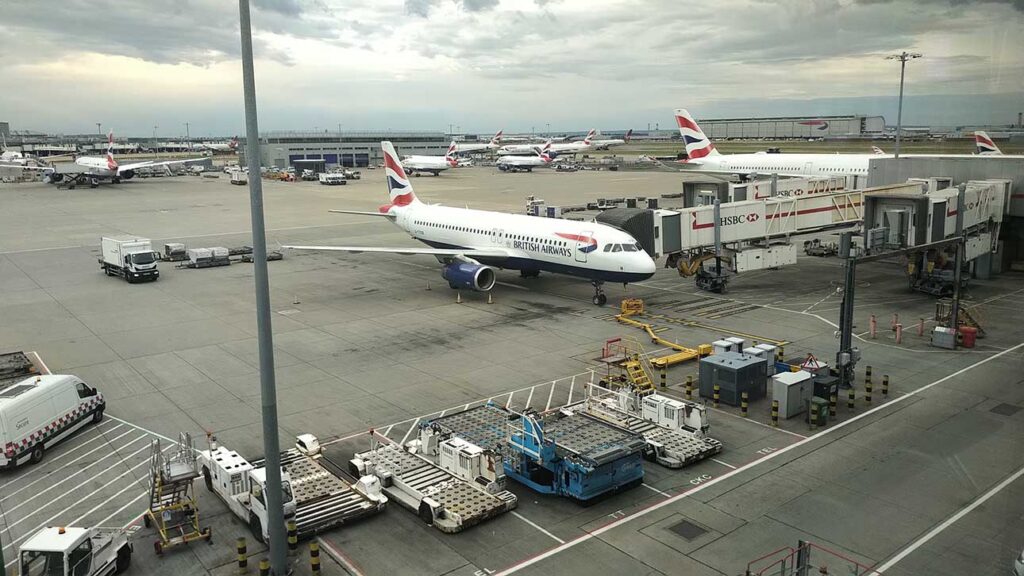
British Airways A320 at gate.
It was such a relief to board this A320 and not be overwhelmed by a sea of Tottenham football shirts from nose to tail, and that included the one adorned by my wife! Today’s flight is over half full and although it is a week since “Freedom Day”, it is gratifying to see that “Personal Responsibility” appears to be the norm amongst those on-board. Additional supplies of hand sanitiser are given out by the cabin crew as we board together with a neat little bag for its disposal post flight. Ever since arriving at Purple Parking this spotting trip does feel like it is happening under very unusual circumstances, but I must keep faith as the prize remains the same. A sombre read the evening before my flight revealed that the total number of passengers using Heathrow in the first 6 months of 2021 would have been surpassed in the first 19 days of 2019!
The majority of the aircraft on the ground this time of day belong to British Airways and Virgin Atlantic, although I did manage to spot one new aircraft type and remove it from the Challenge list, a Lufthansa CRJ-900 departing for Munich. Heathrow is still eerily quiet, although I suspect this will change dramatically from Monday 2nd August when fully vaccinated non-British Nationals arriving from the US and the EU are exempt from quarantine, let us hope so.
Madrid Barajas
The weekly Cubana IL-96-300 flight from Santiago de Cuba was scheduled to touch down at 09:30, and the 5-hour turnaround would provide the opportunity to spot this wonderful aircraft. The chance of spotting an IL-96 outside Russia operating a commercial service was very exciting and I elected to pay in advance for a port side window seat to maximise the chances of seeing this aircraft upon my arrival into Madrid. Sadly, the schedule was cancelled and the aircraft was a no-show, but I still managed to take full advantage of the window seat and was pleased to note several A340-300s of Plus Ultra parked on the ramp in front of Terminal 1. Also of note were the 5 British Airways A380 aircraft parked up on a remote holding area away from all the terminals. There were a number of senior British Airways pilots travelling as passengers on my flight to Madrid, involved in some way with the A380s I suspect? Will we see these aircraft operating transatlantic services again in the not-too-distant future?
A combination of factors led to me arriving at the car rental office an hour later than anticipated; a late arrival into Madrid, priority disembarking for connecting passengers and a tortuous transfer to collect the car. The transfer journey did, however, provide an excellent view of the resident Douglas DC9-32 on display between Terminal 1 and 2, plus the opportunity to spot aircraft other than those belonging to Iberia at T4. Pick of the bunch for me was the aptly registered Aruban Boeing 787-8 P4-787 of Comulux. The car rental office (Record Go) was off airport and is located on the perimeter road at the western end of runway 37L, an excellent location for spotting low-cost carriers, cargo and biz-jet aircraft using terminals 1 and 2.
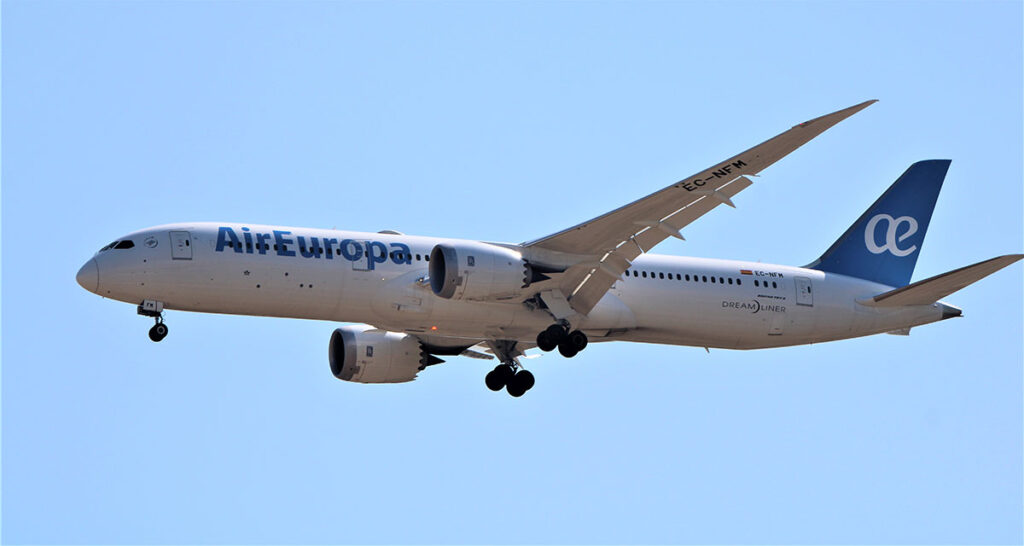
Air Europa 787 landing on runway 37L – taken from perimeter road
Car rental paperwork completed, time to reflect on the job in hand for the next 24 hours. The longer than expected time to finally have car keys in my hand forced a change to the spotting itinerary. The Museo Del Aire is only open between 10am and 2pm and my Sat Nav was predicting an ETA which would have given only 60 minutes or less on site. Admission to the Museum is by reservation only, so I quickly informed them that I was unable to make today’s appointment and booked a slot for 10am the next morning. Technically the museum is located within the Cuatro Vientos airfield so I continued as planned with additional time to spend at both Cuatro Vientos and Getafe airfields. It was a blistering 37 degrees C when I departed the rental compound and perhaps the change of plan was a blessing in disguise as the thought of racing around an open-air collection of aircraft would have proved quite exhausting.
Cuatro Vientos:
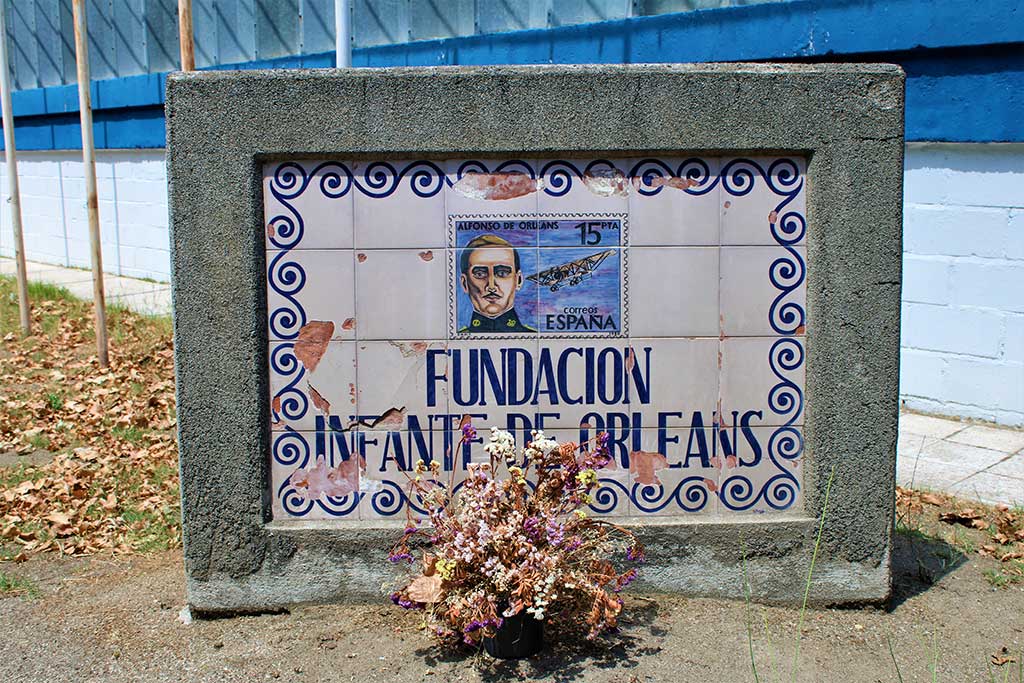
Infant de Orleans “Postage Stamp” outside Foundation hanger
Cuatro Vientos is Spain’s oldest airfield and is home to the Infante de Orleans Foundation and its 43 strong collection of classic aircraft spanning 60 years of Spanish aviation. Infante Alfonso of Spain was a distinguished military aviator during the 1920/30s, and The Foundation today is housed in a large unassuming hanger and its presence amongst the hustle and bustle of this very compact and busy airfield provides a demonstrable link to an aviation world thankfully not forgotten. In addition to an illustrious flying career, Infante de Orleans took a flight in May 1930 aboard the Graf Zeppelin from Seville to New York via Rio de Janeiro, imagine that entry in your flight log book! The reason for the journey, an audience with US President Hoover no less.
The airfield is a joint civil-military operation and as such is split in to two very distinct halves. The south side accommodates the general aviation activities of the many flight schools, aircraft maintenance shops and the large helicopter fleets of the resident state flight services, including both the State Police and State Traffic organisations. Anyone with a serious interest in helicopters should spend some time at Cuatro Vientos. The number of helicopter movements and types is remarkable, ranging from the EC135 Eurocopter to the Puma and there is a small rotary boneyard wedged between two hangers containing several spent Policia airframes. Most aircraft parked on the southerly flight line are largely obscured by a sprawling combination of terminal buildings, general aviation hangers and a large Policia Nacional facility. Photographic opportunities are further hampered by the many “No Photography” signs and “huddles” of Policia National employees having an off-duty cigarette.
Nevertheless the south side of the airfield is fascinating and the mix of aircraft types makes up for the frustration of not being able to catch everything from a photographic perspective. There must have been upwards of 75 plus aircraft parked across the various ramps including 3 DHC-6 Caribous, a handful of small biz-jets, and a plethora of helicopter types. The very smart looking Policia National Beech King Air 200 EC-GBB stole the day in terms of colour scheme and standout appearance. I didn’t have the courage to take a photograph of this beautiful aircraft as one of the group of smokers kept an interested eye on me as I loitered close to the boundary fence with camera in hand. I would be lying if I said “je ne regrette rien”; I do. I would recommend a sustenance break at the very popular and atmospheric “Pilots Bar” located on the main service road close to the Foundation hanger. The restaurant revealed an unexpected collection of aviation trinkets which I could not resist.
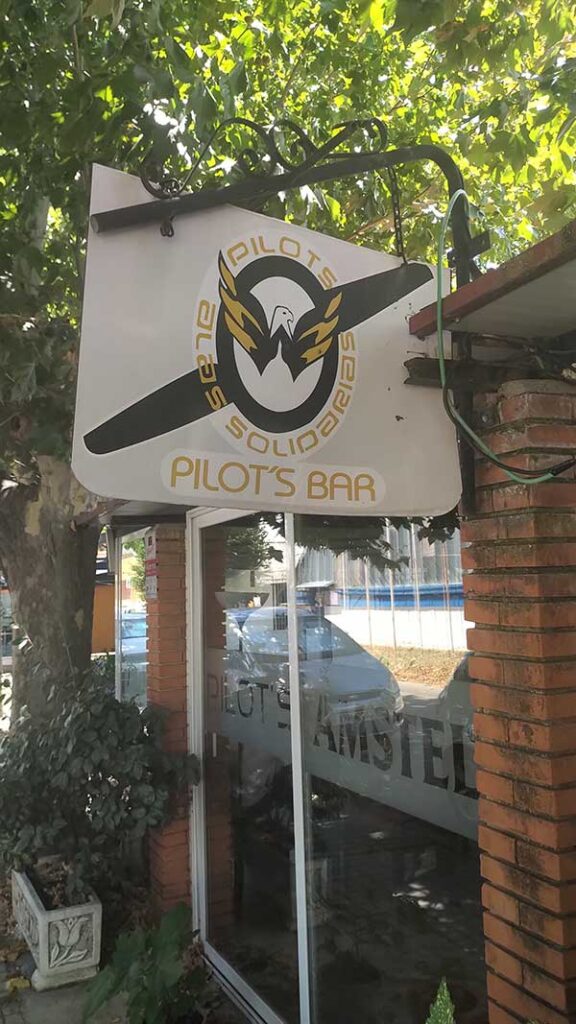
“Pilot’s Bar” located opposite foundation Hanger
I did man up later and photographed the Rockwell Commander N965AR parked on a rather colourful concrete ramp. The turquoise ramp reminded me of the Caribbean and a family holiday back in 2004 when I was fortunate to take a connecting flight between Barbados and Bequia aboard a Trans Island Air Rockwell Commander. The return flight was operated on a single pilot basis and I had the flight deck experience of a lifetime sitting up front for the complete 50-minute sector aboard a very feisty twin piston.
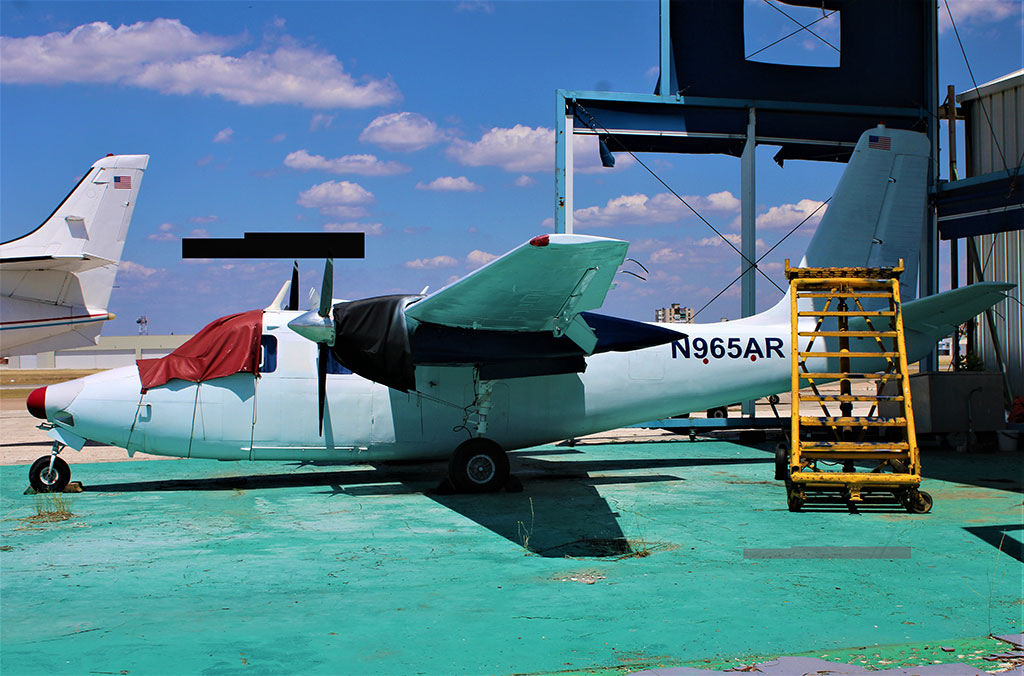
Rockwell Commander N965AR
The north side of the airfield is unmistakably a military base complete with a razor wire topped brick wall perimeter boundary complete with obsolete but still intimidating watch towers. It is home to a small collection of decommissioned Spanish armed forces aircraft including 2 SAR Fokker F27-200 MARs, numerous CASA C212 Avio Cars, and a single example of a Lockheed P-3 and C-130. It is only possible to photograph these aircraft from a distance and my collection is marred by the extreme afternoon heat haze hanging over the airfield. Despite this the visit rewarded me with the F27-200, CASA 212 and Lockheed P-3, all aircraft types required as part of the Challenge. The perimeter road at the eastern end of the airfield does offer a view of the busy southern ramp, but again from a distance and hampered by the afternoon haze. The below photograph captures two of the three resident civilian registered DHC-4 Caribous (EC-GQL & EC-GQN), another aircraft type removed from the list on this trip. The last time I Spotted a DHC-4 Caribou was at Opa Locka airport back in 2001.
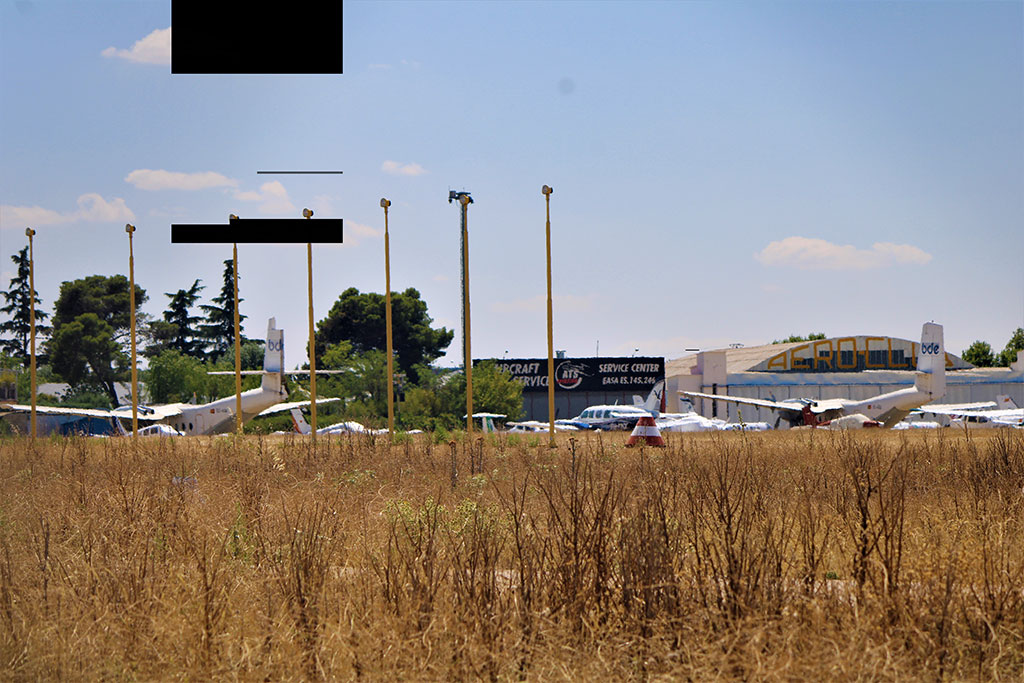
Reverse Caribou shot – EC-GQL & EC-GQN, Piper PA 31-350 PH-PNX parked on the left
The Infante de Orleans Foundation hosts an open day on the first Sunday of each month (excluding January & August). Apart from seeing some wonderful aircraft close up including a British registered DH Dragon Rapide, attendees have access to the fixed wing ramp allowing one to walk amongst the two of the three resident DHC-4 Caribous I will most definitely return next spring and attend one of the open days and fill my “photographic” boots as one would say.
From a spotting point of view Cuatro Vientos is also home to the Museo del Aire, however none of the exhibits are viewable from the main airport and access is via a much convoluted 10-minute car journey via several motorways! I will cover this later when I visit the museum on Wednesday morning.
Getafe airfield:
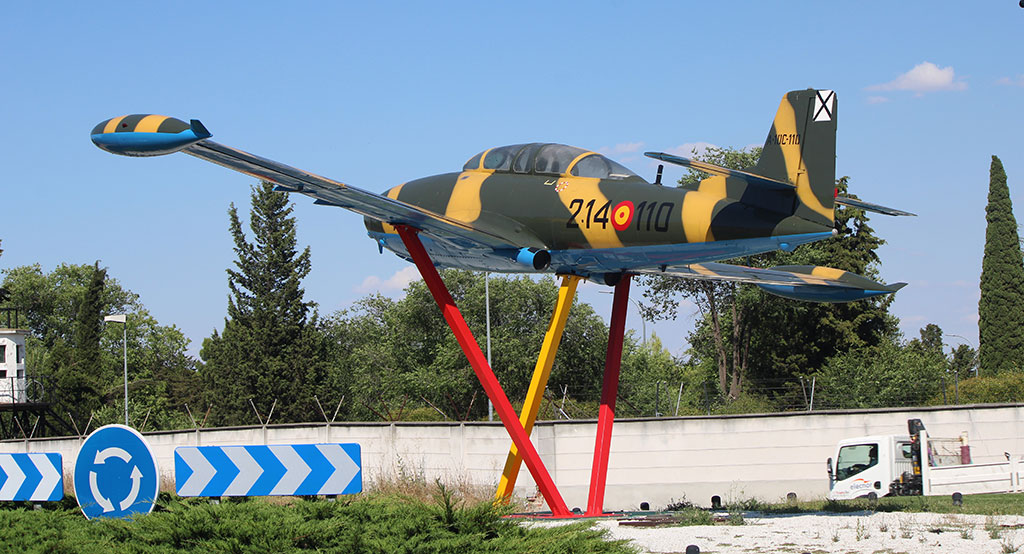
Hispano HA200 Saeta
Similar to Cuatro Vientos, Getafe airfield is a split site accommodating both military and commercial activities. From a military perspective, the airfield is home to several training and transport units belonging to the Spanish Air Force and should offer up Boeing 707-300 registered T-17-3. Commercial activities are undertaken by Airbus/EADS and their presence is nothing short of impressive. Their factory, or should I say factories, occupy an ever-expanding piece of the airfield real estate and are responsible for final assembly of Spanish Air Force Eurofighter Typhoons, A330 MRT conversions of new build A330-200 aircraft, numerous components for Airbus airliners assembled in Toulouse, and the manufacture and assembly of the current range of CN235/295 transport aircraft.
So why the photograph of the Hispano HA200 located outside the airfield? From a spotting perspective I did achieve what I set out to see at this airfield; a Boeing 707-300, an A330 MRT (including Singapore Air Force 764), a CN-295 and unexpectedly A310-300 T22-2 of the VIP fleet normally based at Torrejon airbase. Failing to secure a decent photograph of the aircraft spotted on the airfield, I included the above shot of the Hispano HA200 and perimeter wall hoping that you will run with the idea that this aircraft qualifies as a Getafe resident? Spotting the royal A310-300 also removes the need to visit Torrejon airbase when returning the rental car.
I am pleased to add that there are several superb locations at the western end of the single runway (close to Getafe 3 railway station), which are ideal for shooting landing/taking off aircraft. Movements are limited, but I am confident that good images can be secured of both departing and landing aircraft when they do occur. It is possible to navigate your way around the sprawling Airbus buildings and see the different Airbus/EADS aircraft types, but not so for the military aircraft parked on the military ramp on the northern side of the airfield. As the photograph of the Hispano HA200 demonstrates, viewing the military ramp is largely obscured by the high wall, razor wire and the obligatory watch tower.
I was most pleased to spot the VIP A310-300, with or without a decent photographic record of the event. If I were to ask my daughter’s boyfriend nicely, I am sure he could obtain a photograph of the aircraft’s interior. Several years ago, his father flew overseas on this aircraft as part of a Spanish trade delegation with the King of Spain. Not quite a Graf Zeppelin experience, but a great after dinner talking point all the same. I thought better not to ask for a photograph taken whilst on board the royal A310 with the King of Spain; the thought of high walls, razor wire and watch towers convinced me that I didn’t want to share a cell with my daughters’ boyfriend for the rest of my life.
Museo Del Aire:
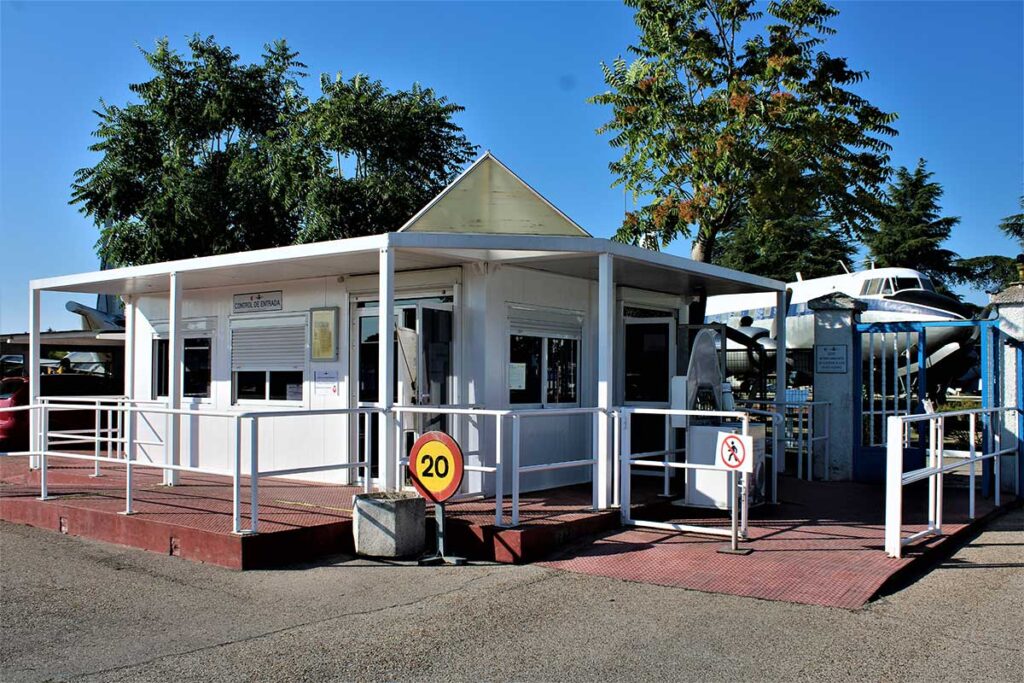
I fell in love with this place, on so many levels the Museum exceeded all expectations. The exhibits span the entire Spanish aviation spectrum, from early biplanes to fighter jet aircraft, but the main reason for the visit was to spot a good half dozen or more airliner and military transport types required as part of my Challenge. For those interested in WWII German aircraft types, this is a must visit museum for you with many Hispano licence-built examples on display including the ME 109. There is also a very impressive collection of well presented fast jets from the Cold War era.
Although the museum is located at the south westerly point of Cuatro Vientos airfield, access is via a single lane road off the A-5 highway. Upon exiting the A-5, you enter a military section of Cuatro Vientos airfield uniquely cordoned off from the main base and soon come upon the museum car park. What is immensely frustrating is that only a stone’s throw away from the car park, but out of sight, is the pair of SAR Fokker F27s and other decommissioned transport aircraft I noted earlier. The military have done a splendid job of making it impossible to see these aircraft. Exiting the museum by car is not for the faint hearted as the single lane road I mentioned earlier joins the fast moving, 3 lane A5 at a 90-degree angle!
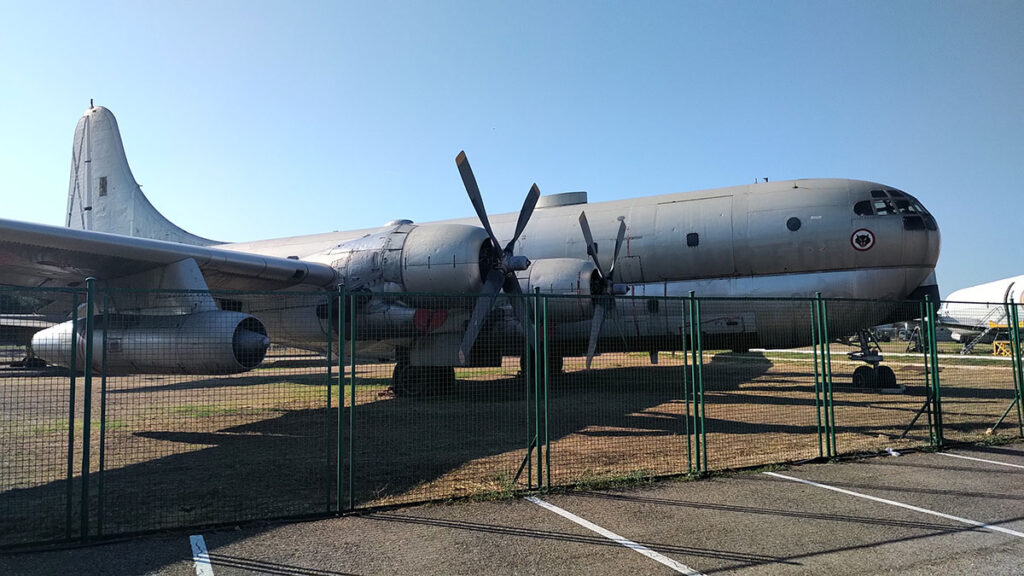
Entering the car park, one is blown away by a starboard view of the immense Boeing C-97 parked very close to the perimeter fence. It is 32 years since I last spotted a Boeing C-97, and upon seeing this wonderful specimen I am immediately transported back to an image of two Argo Air C-97s parked up at Miami International’s “Corrosion Corner”.
The museum isn’t open yet and I join a growing number of visitors as we wait for 10am, all of us in awe of the Boeing C-97 gleaming in the early morning sun.
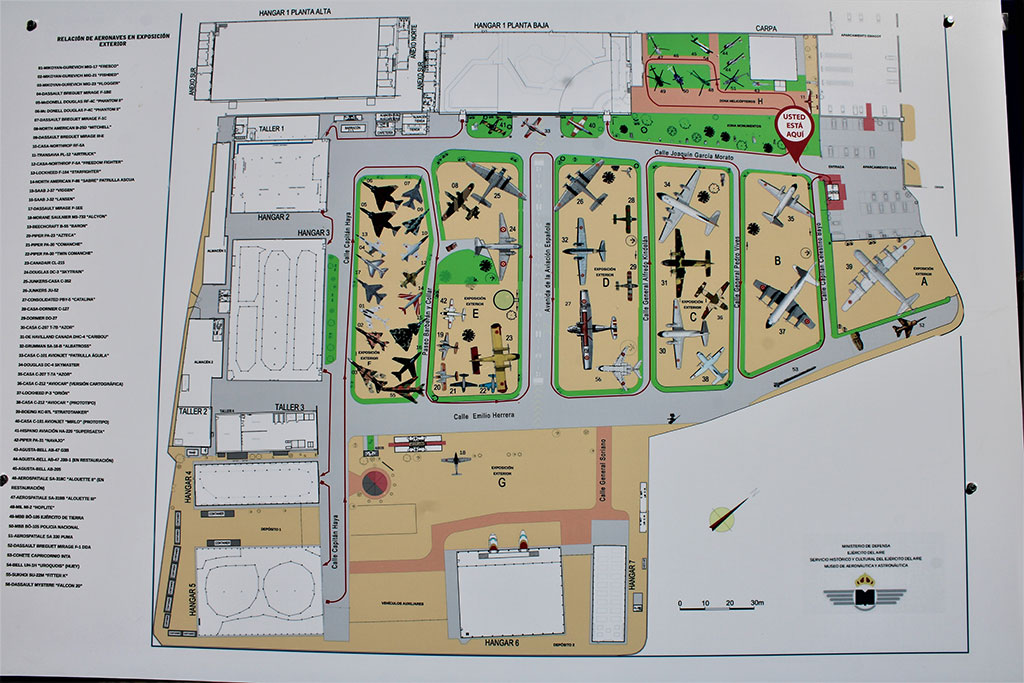
COVID checks done, I pass through the small entrance building into the open air and find myself toe-to-toe with a smorgasbord of classic propeller driven aircraft from the last century. Difficult to know which delicacy to start with, so I consult the exhibition map (above) and immediately set off to the left past the Boeing C-97 and start shooting anything and everything on display. I immediately fall foul of one of the many museum employees on visitor duty by walking on to the grass to take a close-up shot of the DHC-4 Caribou; this is strictly prohibited and I was dutifully cautioned.
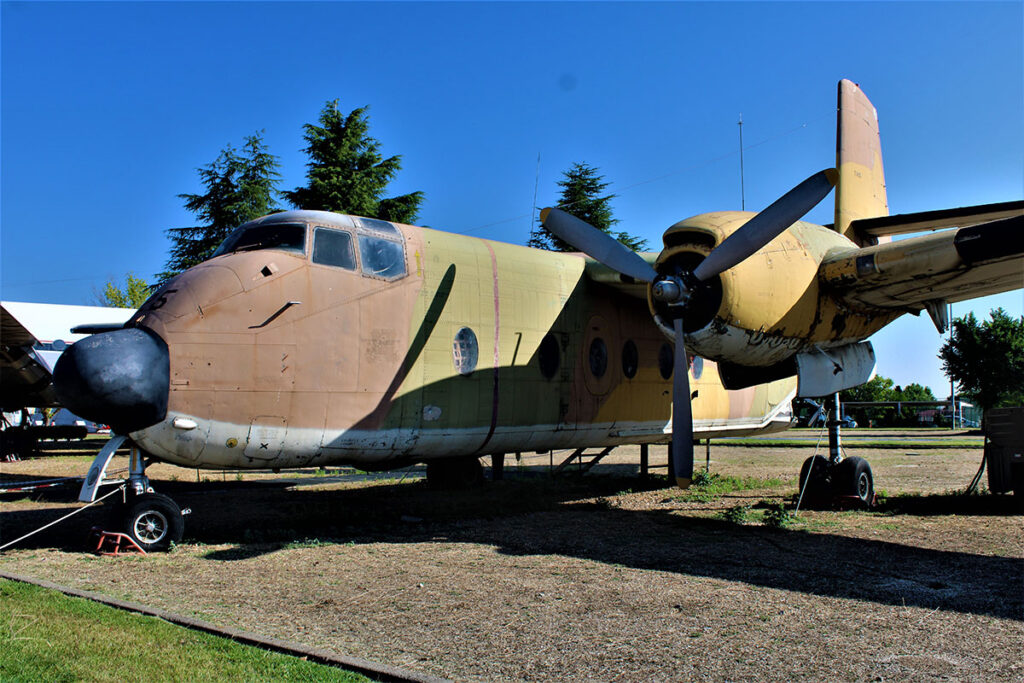
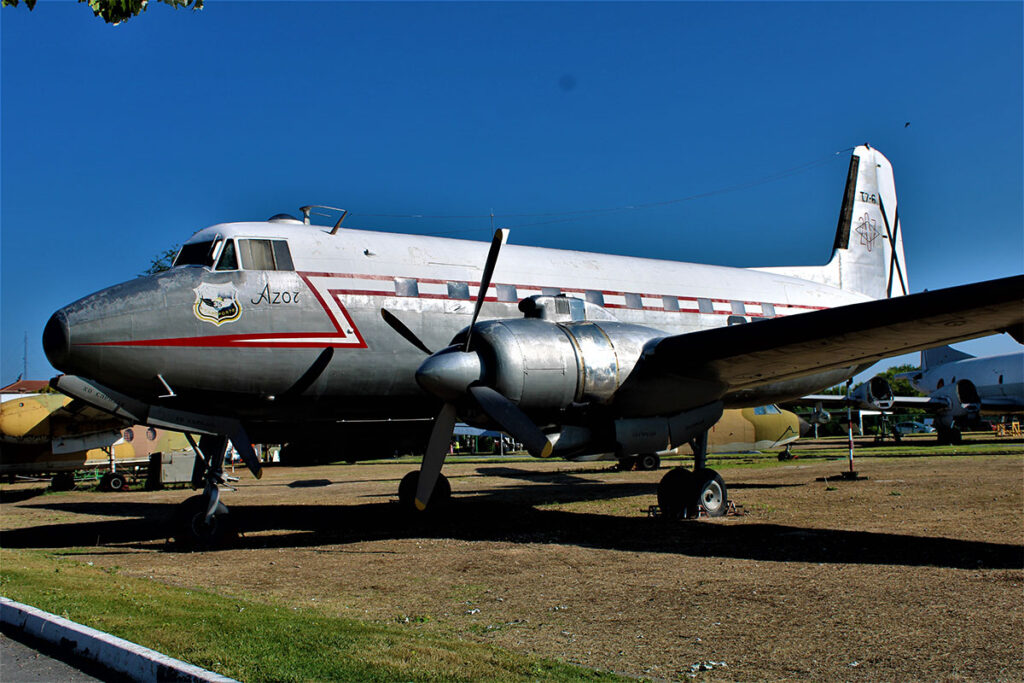
CASA Azor
Surprisingly, I didn’t spot the Douglas C-47 during my visit last year to Duxford, so today’s example is a welcome sight. The warm Spanish weather reminded me of my first flight on a Douglas C-47, this was 41 years ago whilst on holiday in Venezuela. I took a 90-minute flight from the coastal town of Barcelona to the Canaima National Park to visit Angel Falls aboard a C-47, the return trip on DC-3 YV-611C was a flight not to forget! Angel Falls is the world’s tallest uninterrupted waterfall, with a plunge of over 2,600 feet.
Shortly after take-off for the return to Barcelona myself and a handful of other aviation enthusiasts were allowed on the flight deck for a “low level” pass over the Falls. We hastily approached them from down river and just at the point when we all thought the aircraft would fly straight into the plunging water, the two Dutch pilots pulled the nose up and we roared upwards and over the top of the waterfall. Clearly a manoeuvre executed on a daily basis by the crew, but a heart in the mouth moment for the uninitiated. YV-611C was written off in 1998 half a mile from the Canaima runway as it returned from a sight-seeing trip over Angel Falls. Both engines experienced technical problems and ceased operating on approach causing the aircraft to stall, sadly killing the co-pilot and seriously injuring several tourists.
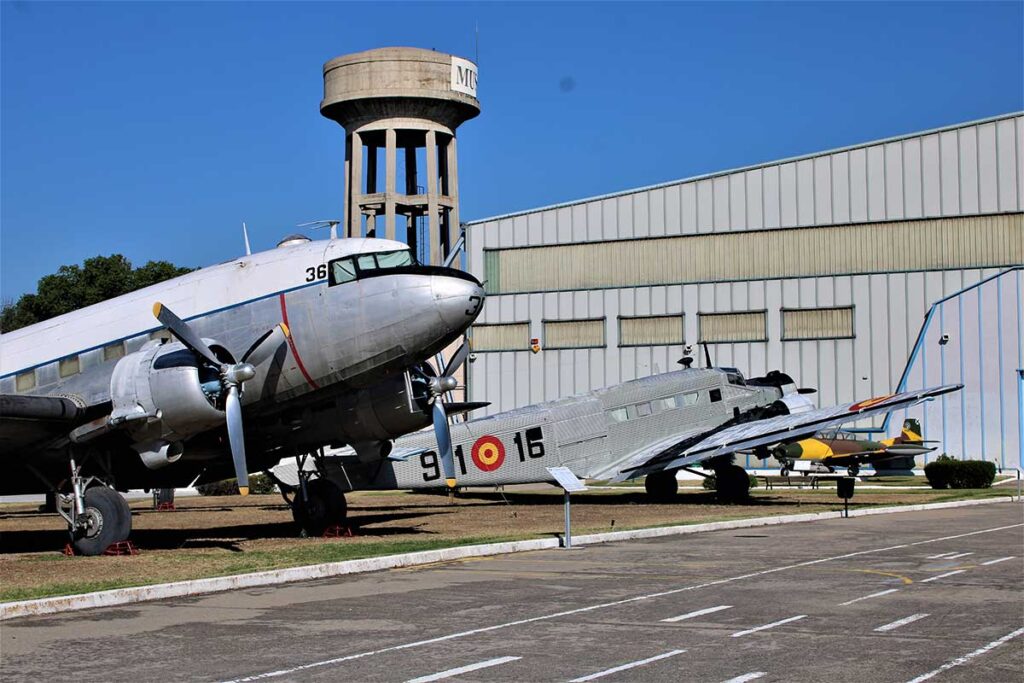
The Douglas C-54 is also on my Spotting Challenge list today, and the exhibit at the Museo del Aire is a fine example of the type. I am rather fond of the Douglas C-54 and first Spotted the type at Liverpool Speke airport in 1968. You guessed, an Aer Turas example on a livestock run from Ireland. I regularly visited Millardair at Toronto Pearson during the 1970s and 80s and Carl Millard was a most generous host and allowed unfettered access to the ramp and his collection of classic piston engine aircraft. I once witnessed the staring up of a Douglas C-54 that was about to be assigned to carry the Canadian National Orchestra and instruments on a nationwide tour. However good the orchestra is, I prefer the sound of 4 spluttering P&W radials kicking into life.
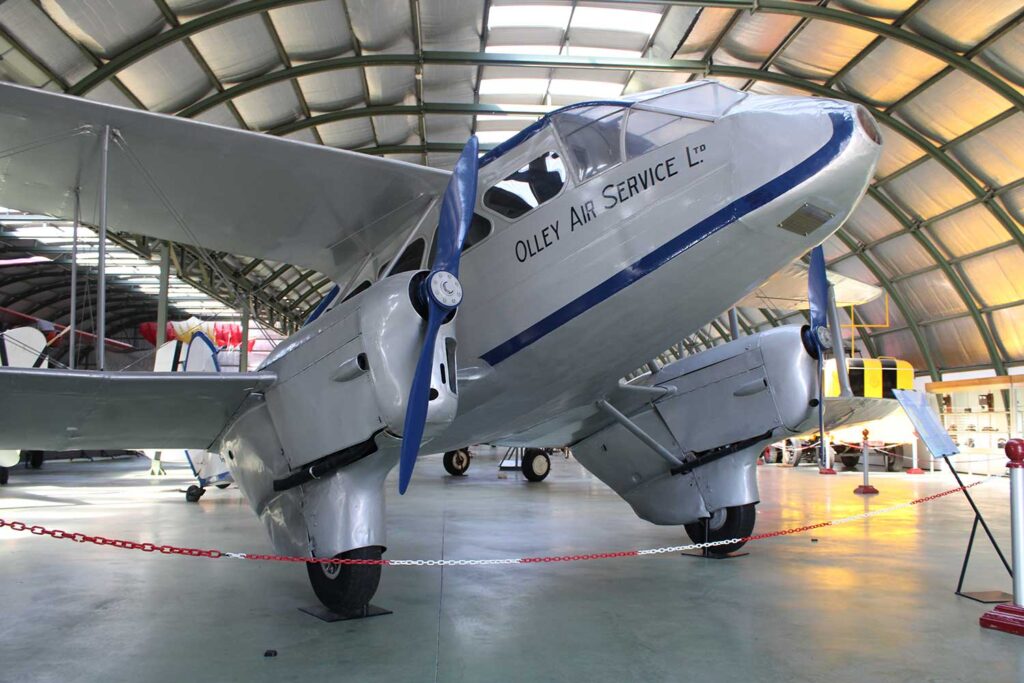
Dragon Rapide G-ACYR
Another aircraft type that evaded me during my brief spotting trips last year was the DH Dragon Rapide. DH Dragon Rapide G-AKIF was the second aircraft I ever spotted back in the day, and it was a regular visitor to Liverpool Speke airport throughout my early spotting years. Checking the exhibition list before my visit to Madrid I was intrigued to note a British registered DH Dragon Rapide amongst such an illustrious collection of Spanish aviation aircraft. It transpires that Olley Airways DH Dragon Rapide G-ACYR was hired in July 1936 by members of the British Fascist Movement to smuggle General Franco out of Madeira to Spanish Morocco at the beginning of the Spanish Civil War. This aircraft is in splendid condition and is displayed next to a Spanish Air Force variant in one of the exhibition hangers.
With the clock ticking and insufficient time spent at this amazing aeronautical museum, I departed for my flight home.
Madrid Barajas:
The drive back to Madrid Barajas was full of added expectation. Whist checking in online the night before, Iberia had offered an upgrade to Business Class for just 60 Euros, an offer that I simply could not resist as I knew this would include not only lounge access at the end of a hot and busy day, but a lie-flat bed for a quick snooze on the 2-hour flight home. Dropping off the rental car was rewarded with additional close-up shots of landing aircraft, and my frequent leaving the line with camera in hand whilst in the queue to drop off the keys kept the many international tourists amused.
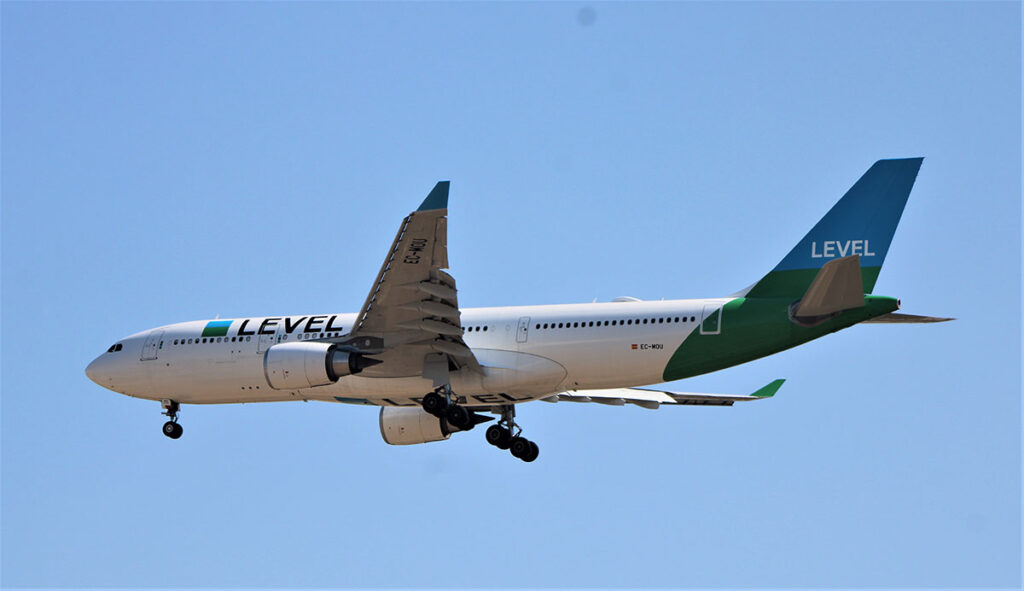
Level A330 landing on runway 37L from the perimeter road
I spent the few hours before my 15:45 departure to Heathrow (last of the day) indulging myself in the sumptuous Iberia Business lounge in Terminal 4S. The lounge provides the opportunity to photograph a fair percentage of arriving and departing aircraft, and although a relatively quiet part of the day several movements attracted my attention. Boeing 737-800/BCF EI-DED is my first Amazon liveried aircraft, converted into a freighter just 2 years ago after 17 years’ service with Ryanair. CRJ-1000 EC-MVC provided a photographic opportunity to catch an aircraft type still required as part of the Challenge before embarking upon this trip.
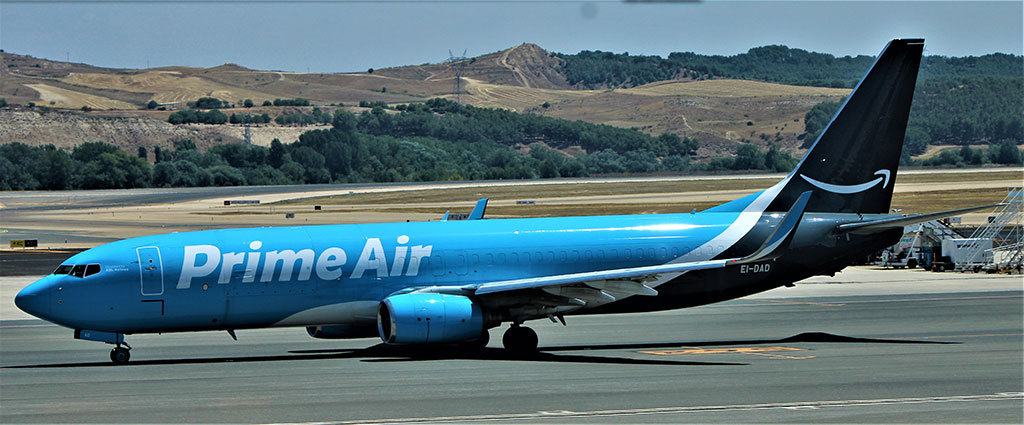
Amazon 737 EI-DED
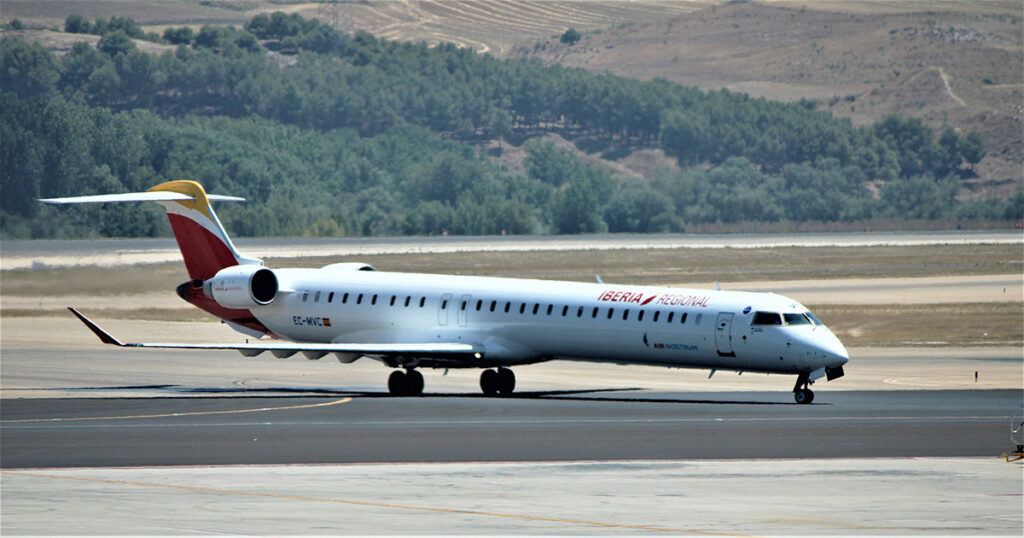
Iberia CJ1000 EC-MVC
Finally, something magical happened. Just 10 minutes before leaving the Iberia lounge for the homeward flight, Plus Ultra A340-600 EC-NFQ landed and taxied past the northerly end of the lounge. I came to Madrid hoping to see an A340-600 parked up, I didn’t expect to see one in commercial service. The aircraft was inbound from Chengdu, the many closed window blinds on the aircraft suggest it was on a cargo run?
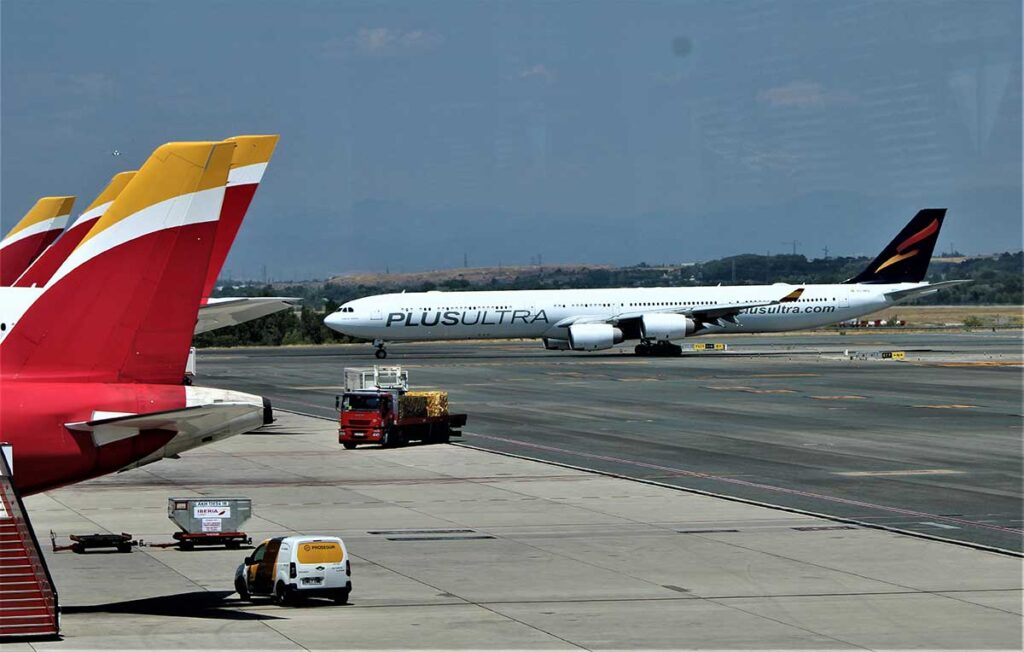
Plus Ultra A340-600 ECNFQ
The verdict!
Was this trip to Madrid as rewarding at the one in 2019? Most definitely. This short spotting trip allowed me to come home with 17 more trophies than the last visit!
Had this short spotting adventure to Madrid been judged by a group of Olympic officials though, perhaps I would have received 9.0 for degree of difficulty, 7.0 for execution and 3.0 for artistic quality. I grossly under-estimated how much time each element of the trip required, even finding a petrol station before returning the rental car ate into the precious few daylight hours I had on the ground. Definitely not gold medal winning standard.
When I next visit Madrid it will be on the first Friday of the month, and not at the height of summer. I will allocate Saturday to the Museo del Aire and take my time to absorb all elements of this splendid rendition of Spanish aviation history. Sunday I will attend the Infante de Orleans Foundation Open Day and take full advantage of being airside at this very busy general aviation airport. Monday would be allocated to Barajas. Finally, if offered the 60 Euro Business Class upgrade on an Iberia wide body, I would take it without hesitation.
One shouldn’t need a reason to go spotting, but without my Challenge I probably would never have drifted off the beaten track and visited the Museo del Aire and that would have been a real shame. I exhort all of you to do make this trip if you have the time and budget. British Airways need a mention before I sign off, they were superb throughout this protracted 12 month “on-off” saga and kept alive the hope of ever going to Madrid, gracias mis amigos.
So where next? Summer is fast fading away but I do hope to squeeze in one more spotting trip before winter. I am thinking of taking the Duster on a North European road trip and “Meet the Fokkers”.






2 comments
Thank you, John, for a fascinating, enlightening and well-written challenge report – as always. It is encouraging to see some normal activities resuming for some people, and I hope to be joining you soon.
I hanker after the years when work took me abroad a lot, and I always tried to make time (from a couple of hours pre-checkin to a glorious whole non-working weekend) for avgeek activities. All memorable, lots of excitement, a few run-ins with the authorities, loads of lovely like-minded people met – and only one missed flight! (It’s an awfully long way from the military aviation museum at IST to Departures!)
Very good report on Madrid. Only been there once, for an hour , on a jump seat flight on a MONARCH 1-11 LTN/MAD/LTN in October 1981.
Aircraft spotted were DC- 8/DC-9/DC-10/B707/CARAVELLEs/F.28s and our 1-11.